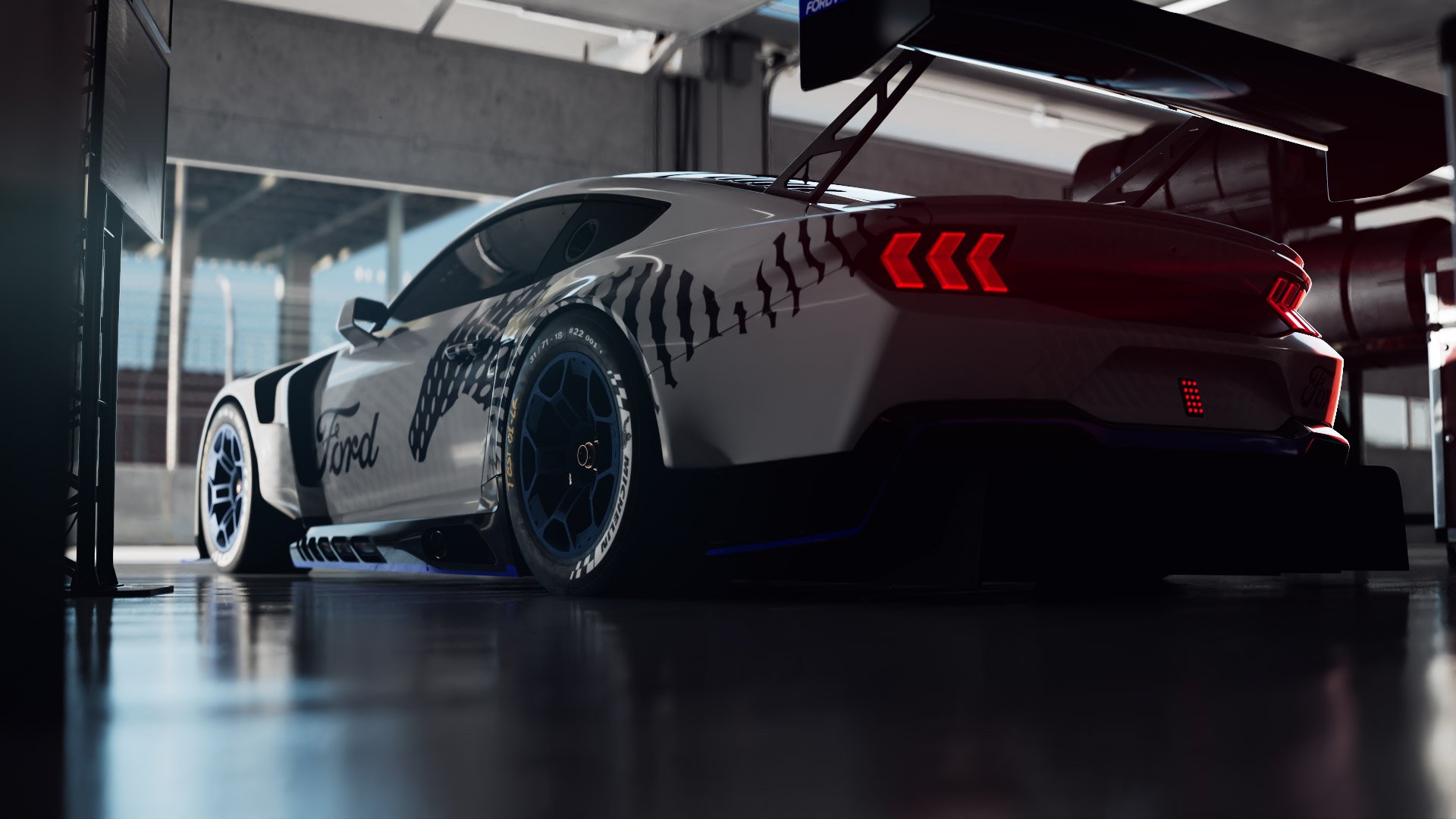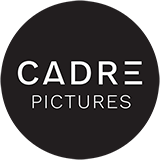
Ford Mustang ‘Detroit Motor Show Launch 2022’.
Our friends at Imagination approached us to produce a 60 second all cgi presentation featuring the 2023 range of FORD Mustangs to be launched at the 2022 Detroit Motor Show. Pretty hard to resist a brief like that.
Client: Ford Motor Company USA
Agency: Imagination
This project landed just as the studio was undergoing an UNREAL ENGINE 5 pipeline and creative testing phase, and for a moment, we seriously considered diving head first into this project using UE5.
But once we started discussing the virtues and potential pitfalls of taking this approach, it became clear that given the tight and inflexible schedule, the safety net that our current pipeline offers could not be beaten.
The marketing team at FORD USA had already compiled a 60 sec edit using live action race footage as the template of the edit as well as some simple layout guides in UE5. They also supplied the six featured Mustang 3D models that were yet to be textured or surfaced (gray models), and the vehicle livery wasn’t going to arrive for a few weeks into the project and we had a six week production window.
We started by taking FORD’s base edit and gradually developed it further to enhance the narrative as well as creating greater impact within the sequences and individual shots. We also took the UE5 layouts, also supplied by FORD, and imported these into 3ds Max where we rebuilt them and added all the detail. This applied to everything in the project – grandstands, track/curbs, pits and the surrounding forest.
One thing we knew from the beginning was that the scenes would be data heavy and that we would need to take steps to ensure that working on the scenes would still be nimble and responsive, and that come render time, the throughput of the shots on our render farm would be efficient
The vehicles are one area which traditionally carries a lot of baggage data wise, so we chose to use a low poly cage for each car with projecting UVs once we unwrapped the high res CAD models. The livery was unique for each vehicle and was applied in Substance.
With the forest, we knew we had to optimise the data set here as that had the potential to make the whole process grind to a halt, so we ended up culling trees that were off camera to reduce the shot geo which worked a treat. However, as our scene lighting was set to late afternoon with a low sun creating long shadows, culling off-screen trees had the unintended effect of changing the lighting aspect of some shots that relied on shadows being cast across the tracks and cars. Putting trees back had another consequence of significantly darkening some shots, so the environment team spent some time managing the off-screen models to ensure we achieved the desired lighting outcome as well as ensuring the scene was manageable to work with.
We also relied on procedural models and textures where we could which is where 3ds Max plugins Railclone and Forest Pack came in very handy. Even though quite a bit of detail was hand placed for objects such as the grandstands, the pit buildings and the base track textures, using procedural elements as much as we could was always going to be the solution for the environments.
Once inside the garages, adjusting the lighting became a fast interactive process with Redshift’s realtime viewport rendering. This meant that Pat Da Cunha - our Creative Director - had the ability to art direct these shots in a manner that was far more lucid and tangible than what was available not that long ago.
Ben Bryan is one of the Founders of Cadre Pictures and is also Cadre Picture’s Technical Director. In this role, Ben has not only developed our studio pipeline that accommodates multiple projects co-existing effortlessly, but has also developed a custom Render Farm Manager as well as a Node based Render Pass Manager. Ben has integrated these into our 3ds Max/Redshift/Fusion pipeline which includes automated generation of dailies created once the renders are completed.
Having these custom tools in place adds to the efficiency of turning these large scale projects around in a timely manner, especially when a big crew comprised of both staff and contractors is involved.
So what Ben’s pipeline allows us to do is take the original base ‘gray’ 60 second layout and then as each artist is ready to publish their content each day (whether it’s updates to the vehicle surfacing, the animation, the environment, etc…), these are seamlessly inserted so that come render time each evening, all the latest additions fall into line to produce an iterative daily for the team to evaluate each morning. In fact, there’s no way we could see a job like this working efficiently without it.
These nightly renders lead to daily reviews and markups from Pat and the supervising technical producer, Steven Kerswell.
In all, we produced a total of 35 shots with 2 of these being added in the final two days of production. We started off with 5 Mustangs but a 6th was added in the final week of production.
Being that it was for the Detroit Motor Show, the final deliverable was 4K 16:9 at 30fps.
Software used -
3ds Max, Redshift, Fusion, Railclone, Forest Pack, Fume, After Effects, Mari, Substance, Photoshop and almost UE5.















